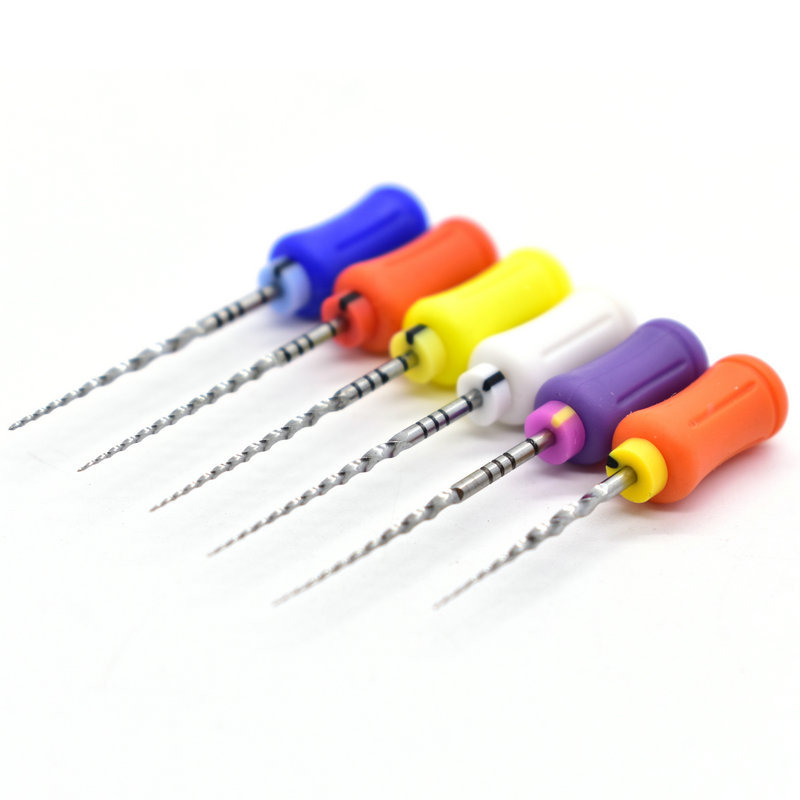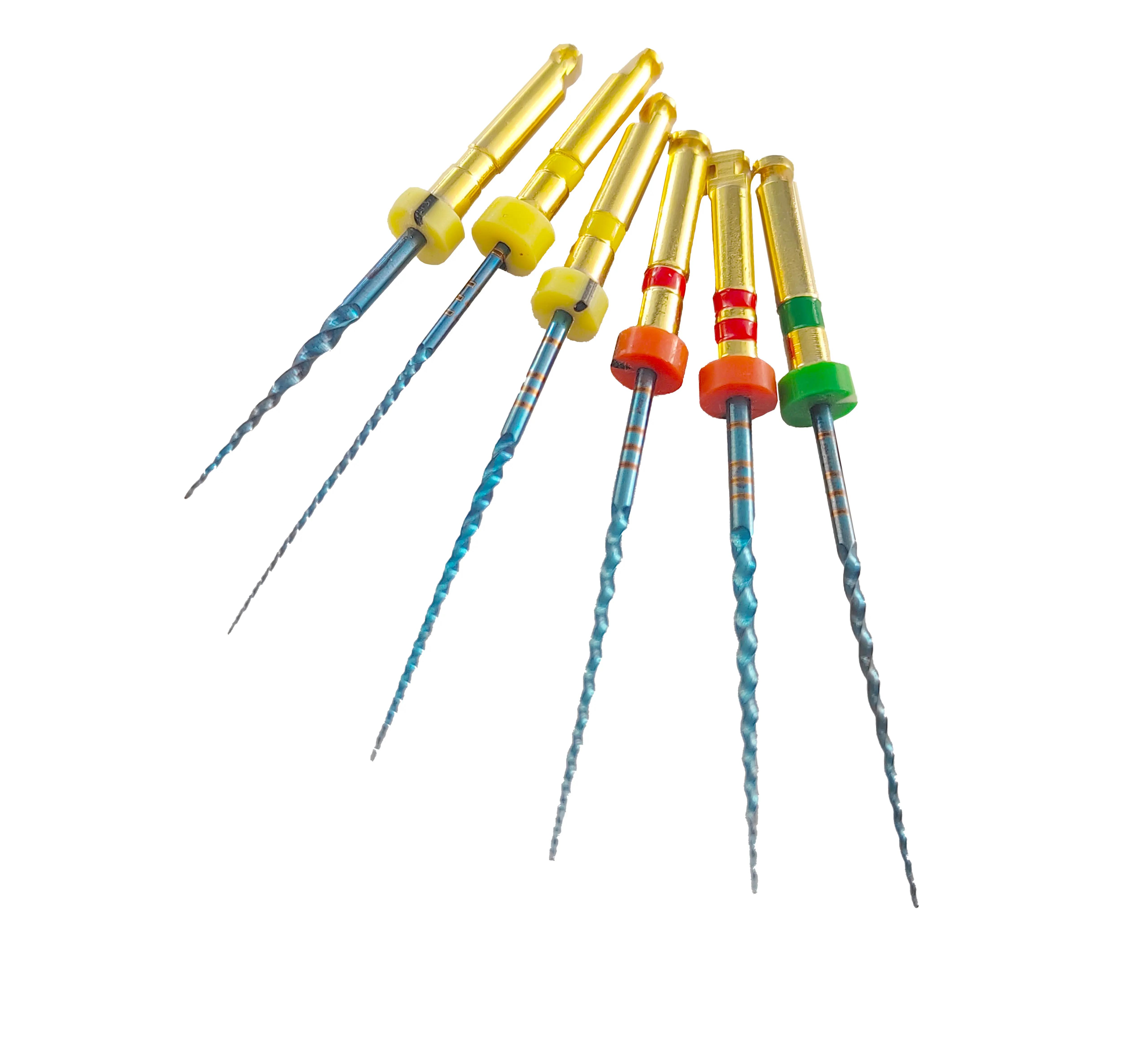
Explore Our Range Of Endodontic Files
![]()
.png)
The Vital Role of Root Canal Files in Root Canal Treatment
During root canal treatment, root canal files play a crucial role as key tools that ensure the success of the procedure. These precision instruments are primarily used for cleaning, shaping, and disinfecting the root canal system to remove damaged or infected pulp tissue and prepare for the final placement of filling materials. COMLEA’s NiTi root canal files are renowned for their exceptional flexibility and efficient cutting performance, making them adept at handling various complex root canal shapes, including curved and narrow canals. Our product line caters to diverse clinical needs, ensuring precise operation every time.
By using COMLEA’s root canal files, dentists not only enhance their work efficiency but also significantly improve patient comfort and treatment outcomes.
Discover The Difference Between Manual Files And Rotary Files
![]()
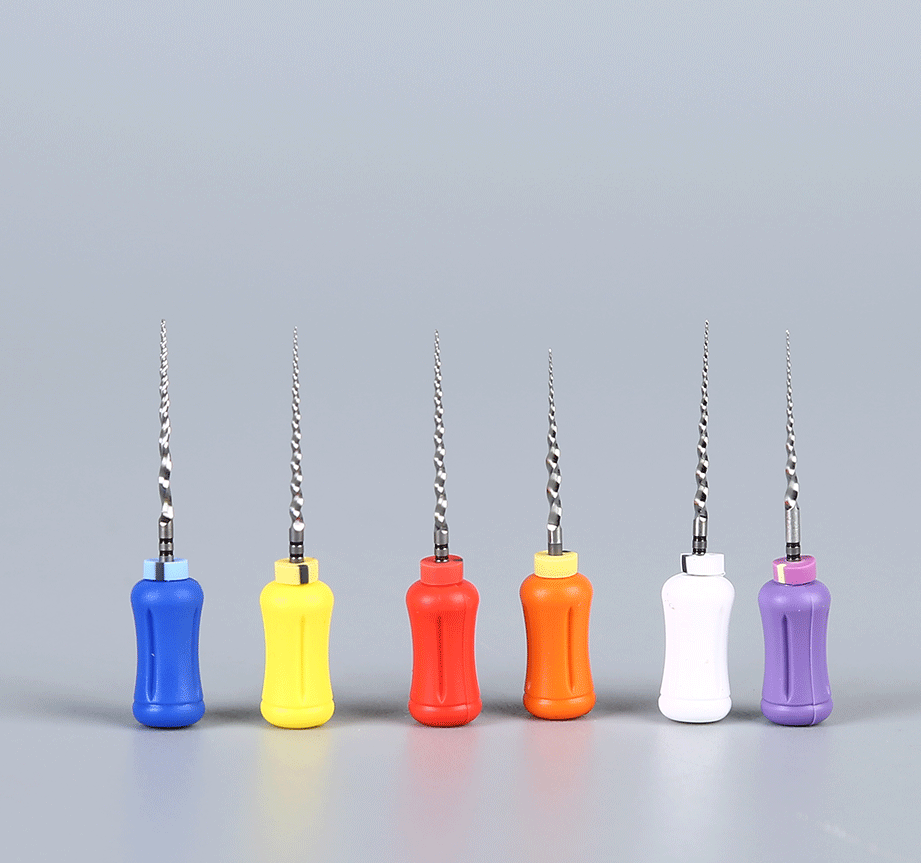
Manual Files
1.Driving mode: Manual operation is performed by relying on the doctor's hand strength, and the tissue in the root canal is filed through up and down or rotation movements.
2.Cutting efficiency: The cutting efficiency is relatively low, the amount of filing each time is small, and it usually takes a long time to complete the root canal preparation.
3.Shaping effect: The shaping effect depends largely on the doctor's experience and feel. For complex and curved root canals, manual operation can better adapt to the shape of the root canal, but it may be slightly inferior in terms of consistency and accuracy of the root canal.
4.Operation difficulty: The operation is relatively simple, mainly relying on the doctor's feel and experience to control the force, direction and depth, etc., but the doctor needs to have high manual operation skills and experience.
5.Fatigue degree: During use, the doctor needs to operate manually continuously and is prone to fatigue, especially when dealing with multiple teeth or complex root canals.
6.Cost: The cost is low, usually made of stainless steel, the price is relatively cheap, and no additional motor equipment is required.
7.Adaptation: For some complex and curved root canals, especially in the apical part and small branches of the root canal, manual filing may be more convenient for doctors to operate and control finely, and better clean up the dead corners of the root canal.
8.Different handles: The handle is easy for the doctor's thumb and index finger to hold, allowing for flexible operation inside the tooth
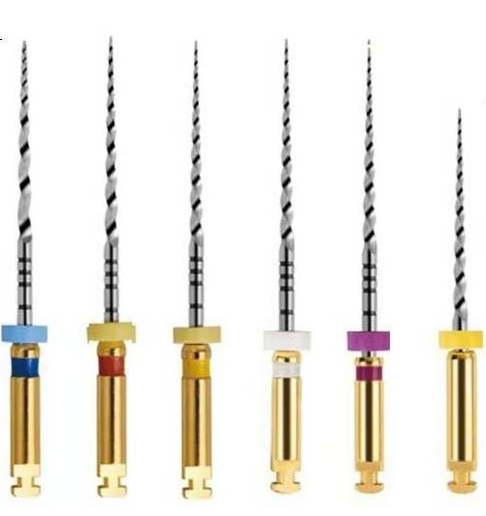
Rotary Files
1.Driving mode: It needs to be connected to a specific motor device and driven by the motor to rotate, so as to realize the filing function.
2.Cutting efficiency: It has high cutting efficiency and can remove more root canal tissue in a shorter time, and quickly prepare the root canal shape.
3.Shaping effect: Due to its design and rotation mode, it performs better in the consistency and accuracy of root canal forming, can better maintain the linearity of the root canal, and reduce the risk of root canal deviation.
4.Operation difficulty: The operation is relatively complicated, and the doctor needs to be familiar with the operation of the motor equipment. The training and skills of the doctor are high, and the parameter setting and maintenance of the equipment should also be paid attention to.
5.Fatigue degree: It can reduce the doctor's work intensity and hand fatigue, but the doctor needs to stay focused for a long time to ensure the safety and accuracy of the operation.
6.Cost: It usually needs to be equipped with special motor equipment, and the overall cost is relatively high.
7.Adaptation: In simpler and straight root canals, machine files can complete the preparation work more efficiently, saving time and energy.
8.Different handles: It is installed on the motor fixed base, and experienced doctors use the motor to rotate at high speed to correct the bad tooth part.
Characteristics Of Root Canal Files
![]()
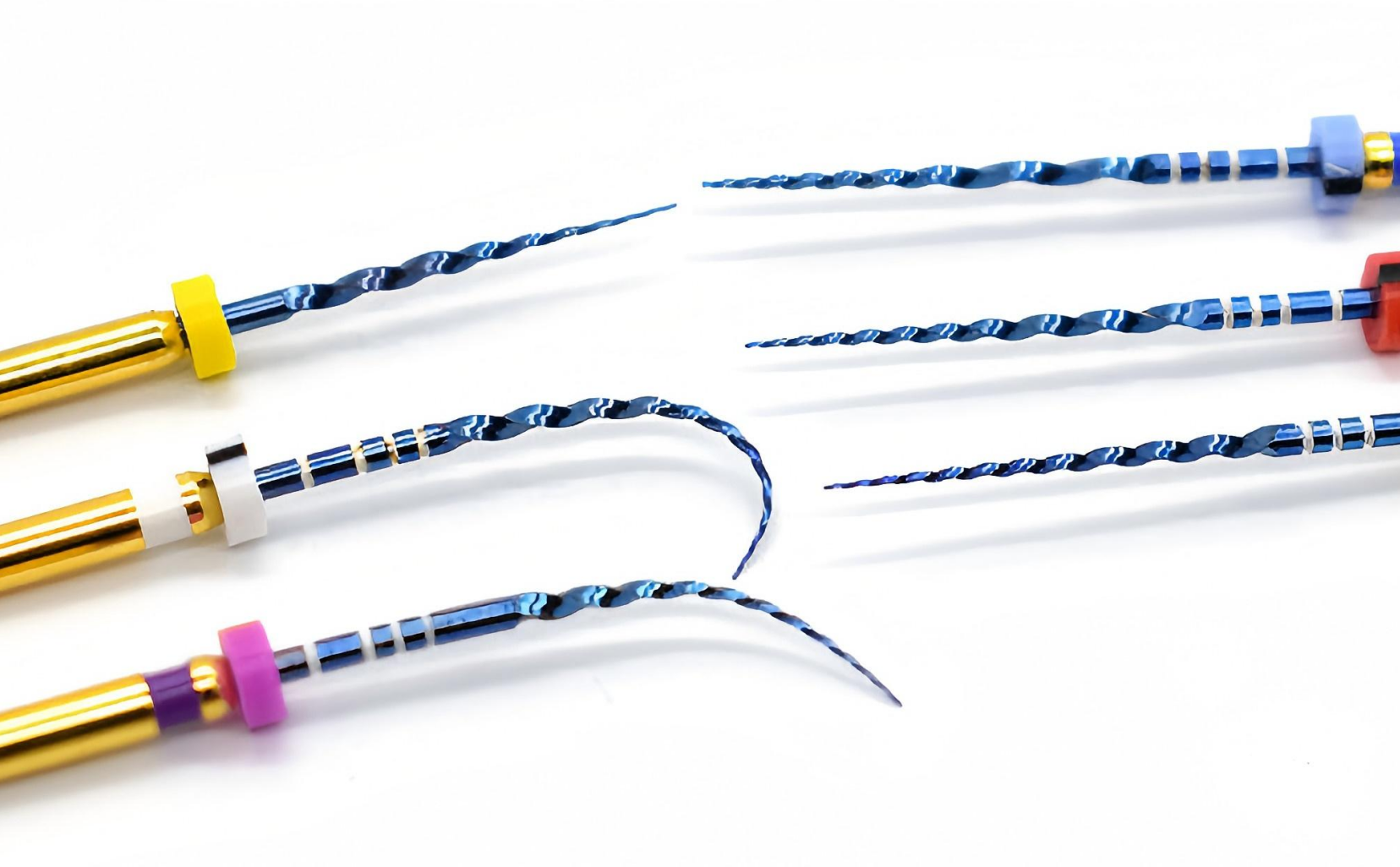
Material Properties
Root canal files are usually made of stainless steel or SMA.Stainless steel root canal files have good hardness and elasticity, and can effectively cut and clean the tissue in the root canal. Its manufacturing process is mature and the cost is relatively low. For example, the K-type root canal file is a common stainless steel root canal file. Its blade design can well scrape the pulp tissue and infected materials on the root canal wall.
SMA root canal files have superelasticity and good shape memory. This property enables it to better adapt to the shape of the root canal in a curved root canal and reduce the risk of perforation of the root canal side wall. SMA root canal files have obvious advantages in the treatment of complex root canal systems. For example, in the case of multiple root canals of molars and the root canal has a certain curvature, it can reach the end of the root canal more smoothly for cleaning.

Design Features
- Blade Design: The blade of a root canal file has a variety of shapes. For example, there is a design where the cutting edge is spiral. The spiral blade can effectively cut the pulp tissue and dentin debris in the root canal. The cutting efficiency and chip removal ability vary depending on the angle and pitch of the spiral. A root canal file with a tight spiral is more delicate when cutting and is suitable for fine cleaning of the root canal; while a file with a larger spiral pitch is more efficient when removing more tissue.
- Taper Design: The root canal file has a certain taper, which helps it to gradually clean deeper into the root canal. The general taper ranges from 0.02 to 0.12. For example, a root canal file with a taper of 0.02 is more used in the initial enlargement stage of the root canal. It can enter the root canal more gently and avoid excessive cutting of the root canal wall; while a root canal file with a taper of 0.12 is usually used in the final shaping stage of the root canal, which can better shape the root canal into a shape that is conducive to filling.
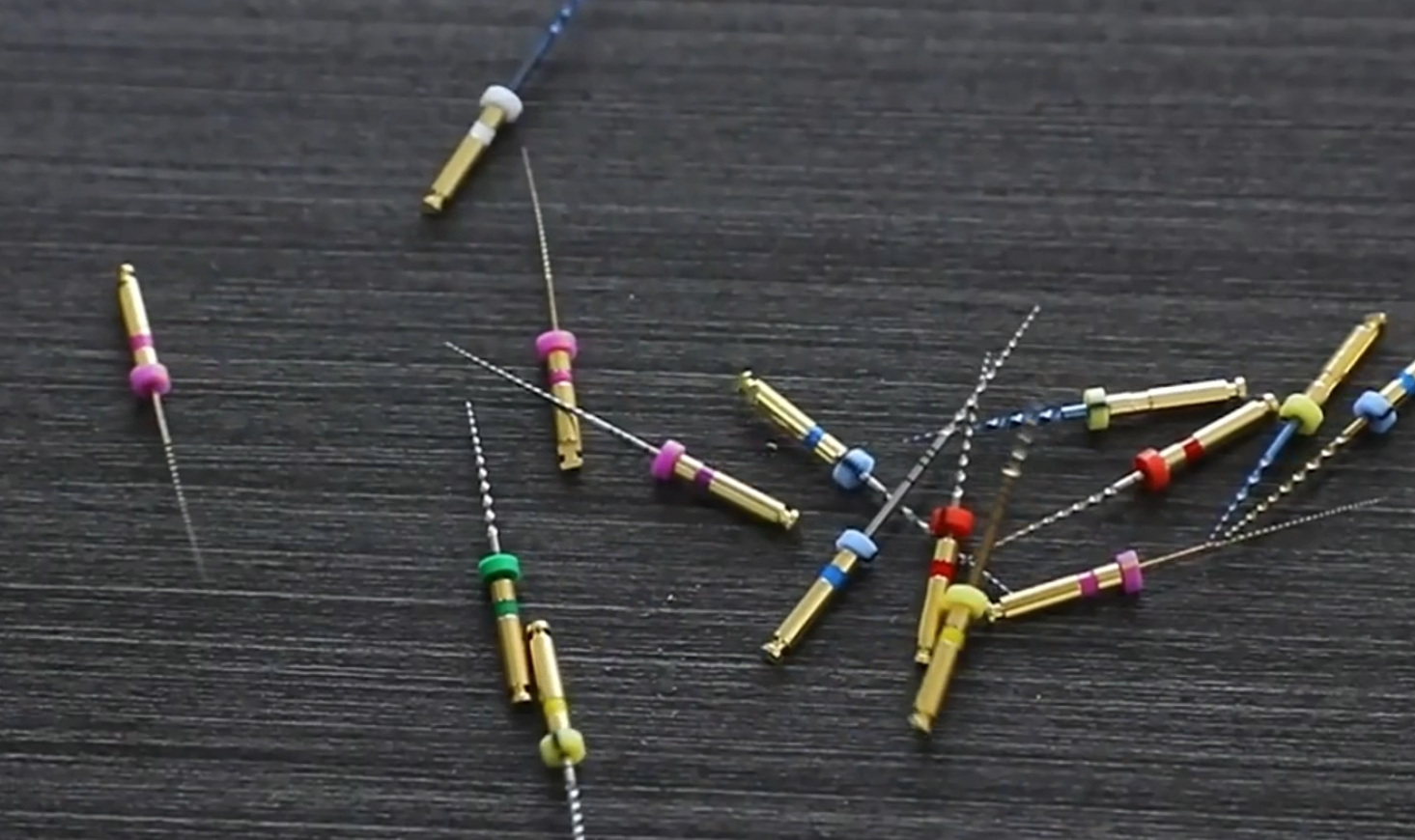
Size Characteristics
Root canal files have a variety of size numbers to accommodate root canals of different thicknesses and lengths. The size range is usually from No. 8 to No. 140. Smaller-sized root canal files (such as No. 8-20) are mainly used for root canal exploration and initial unblocking. They are relatively slender and can enter narrow root canal openings. Larger-sized root canal files (such as No. 60-140) are used to expand and shape the root canal. After cleaning most of the tissue in the root canal, these larger-sized files can be used to make the root canal reach the appropriate size, so that the subsequent filling materials can fill the root canal well and ensure the quality of root canal treatment. In terms of length, common lengths include 21mm, 25mm, etc. The doctor will choose a root canal file of the appropriate length according to the actual length of the tooth to ensure that the inside of the root canal can be completely cleaned.
FAQs
![]()
Q: Will it hurt during the root canal file operation?
A: Before the root canal file operation, the dentist usually gives the patient local anesthesia. Therefore, during the operation, the patient generally does not feel
obvious pain. However, after the anesthetic effect wears off, there may be slight discomfort, which is normal and can usually be relieved by taking painkillers
prescribed by the doctor.
Q: What should I do if the root canal file breaks inside the tooth?
A: Root canal file breakage is a relatively rare but more difficult situation. If this happens, the doctor will first try to remove the broken end with a special instrument. If it cannot be removed, the subsequent treatment method will depend on the location of the broken end and the degree of impact on the root canal treatment effect. If the broken end does not affect the filling of the root canal and the subsequent treatment effect, it can sometimes be left in the root canal, but long-term observation is required; if it affects the treatment, more complex methods such as surgery may need to be considered.
Q: Can teeth recover their normal functions after using root canal files?
A: Root canal files are used to clean dental pulp and other tissues infected by tooth decay. After completing root canal treatment, teeth can recover their functions to a certain extent. However, since the dental pulp has been removed, the teeth will be more fragile than normal teeth. Usually, crown restoration is required to protect the teeth. After proper restoration, the teeth can perform chewing and other functions better.
Q: How long does it take to perform a root canal file?
A: The time it takes to perform a root canal file varies depending on the complexity of the tooth. For simple root canal treatment of anterior teeth, it may take about 30-60 minutes to perform a root canal file. For complex teeth with multiple root canals, such as molars, the operation time may be extended to 1-2 hours or even longer. This also includes the time required to take X-rays during the operation to check the root canal cleaning status.
Q: Is there an infection risk during the operation of the root canal file?
A: There are certain infection control measures to reduce the risk during the regular operation. Dentists will use sterilized instruments and strictly follow the principle of aseptic operation during the operation. However, the oral cavity itself is a bacterial environment. If the tooth infection is serious or the instrument is not thoroughly sterilized, it may cause infection. If swelling, increased pain or fever occurs after the operation, it may be a sign of infection and you need to seek medical attention in time.
Q: Will tooth decay recur after the root canal file is cleaned?
A: The root canal file cleans tooth decay mainly for the infected tissue inside the pulp cavity. However, if oral hygiene is not maintained well, caries may still occur in other parts of the teeth (such as the surface of the crown). Therefore, after root canal treatment, patients need to maintain good oral hygiene habits, including brushing their teeth correctly, using dental floss, etc., and have regular oral examinations, which can minimize the possibility of tooth decay recurring.

Get In Touch
Need more information or have questions? Contact us today, and our expert team will provide you with personalized support and solutions.


